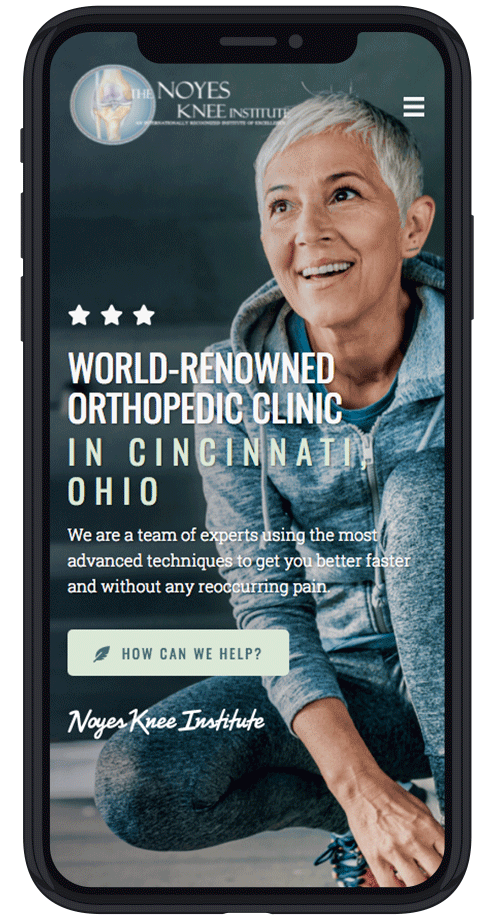Published On
Category
Dr. Noyes Publishes Systematic Reviews for the Orthopaedic Community
During the past 2 years, Dr. Noyes and researchers at the Noyes Knee Institute have published a series of “systematic reviews” in medical journals on a variety of highly important topics in orthopaedics. A systematic review is a diligent and comprehensive analysis of all clinical studies that have been published in the medial literature pertaining to an area of interest. The goal is to analyze the data presented from many different investigators in order to answer a question. This type of research is considered extremely valuable because it encompasses large numbers of patients and data that is usually not achievable in one physician’s practice.
Clinical Healing Rates of Meniscus Repairs of Tears in the Central Third (Red/White) Zone
Sue D. Barber-Westin, B.S. and Frank R. Noyes, M.D.
Arthroscopy, accepted for publication, 2013
This study determined the clinical healing rates of repairs of meniscus tears that extend into the central third region (red/white) and the factors that affect the outcome. Preservation of meniscal tissue and function is considered critical for long-term joint function; however, the healing rates of tears that extend into the avascular portion of the meniscus are not clearly known. Of 334 articles identified, 23 met the inclusionary criteria encompassing 767 red/white meniscus repairs. Overall, 83% of the repairs were clinically healed with no additional surgery required and no obvious clinical meniscus symptoms detected. This included 382 of 470 (81%) inside-out and 255 of 297 (86%) all-inside suture repairs. Authors generally found that patient age, chronicity of injury, involved tibiofemoral compartment, gender, and concurrent ACL reconstruction did not adversely affect the results. We concluded that an acceptable mid-term clinical healing rate was found for red/white meniscus repairs, supporting this procedure when appropriately indicated.
Advanced Patellofemoral Cartilage Lesions in Patients Younger than 50 Years of Age: Is There an Ideal Operative Option?
Frank R. Noyes, M.D. and Sue D. Barber-Westin, B.S.
Arthroscopy 29: 1423-1436, 2013
The purpose of this study was to determine if there exists an ideal operation for large, painful lesions on the undersurface of the patella (kneecap) in patients 50 years of age or younger. Of 991 articles found, 18 met the inclusionary criteria, encompassing 840 knees. The operations done included autologous chondrocyte implantation (ACI), osteochondral allografting (OA), and patellofemoral arthroplasty (PFA). The results indicated that a long-term (greater than 10 years) beneficial effect might not occur in 1 of 3 ACI and PFA procedures and in 2 of 3 OA procedures. Continued work and research is required to find the best operation for this difficult and complex problem.
Anterior Cruciate Ligament Injury Prevention Training in Female Athletes: A Systematic Review of Injury Reduction and Results of Athletic Performance Tests
Frank R. Noyes, M.D. and Sue D. Barber-Westin, B.S.
Sports Health 4: 36-46, 2012
The objective of this study was to determine if ACL injury prevention programs have a positive influence on both injury rates and athletic performance tests in female athletes. We reviewed the literature regarding ACL injury prevention training programs and initially found 57 studies that described 42 programs. Of these, 17 studies met our criteria. Only 2 of these programs significantly reduced ACL injury rates and improved athletic performance tests: Sportsmetrics and the Prevent Injury and Enhance Performance program (PEP). The other programs did not improve both of these factors. It is important for medical professionals and athletes alike to understand that not all so-called ACL injury prevention programs have proven effectiveness. Further information on Sportsmetrics may be found at http://www.Sportsmetrics.org.
Treatment of Meniscus Tears During Anterior Cruciate Ligament Reconstruction
Frank R. Noyes, M.D. and Sue D. Barber-Westin, B.S.
Arthroscopy 28: 123-130, 2012
This study defined the incidence of meniscectomy (removal of torn meniscus tissue), meniscus repair (sewing back together torn meniscus tissue), and meniscus tears left alone during ACL reconstruction. The search yielded 159 articles that met our study criteria, encompassing 19,531 patients in whom 11,711 meniscus tears occurred during the ACL injury. We found that 65% of meniscus tears were removed, 26% were repaired, and 9% were left alone. The high incidence of meniscectomy is concerning because research has shown that removal of meniscus tissue accelerates degenerative joint changes in the knee, leading to arthritis. We recommend repair of meniscus tears whenever possible in order to preserve this vital structure.
Objective Criteria for Return to Athletics After Anterior Cruciate Ligament Reconstruction and Subsequent Reinjury Rates: A Systematic Review
Sue D. Barber-Westin, B.S. and Frank R. Noyes, M.D.
The Physician and Sportsmedicine 39: 100-110, 2011
This study aimed to determine the objective criteria used by physicians to determine when patients may return to sports activities after ACL reconstruction. Secondly, to determine the rates of reinjury to either the reconstructed knee or the opposite knee after sports are resumed. The search yielded 21 articles that met our study’s criteria encompassing 1,641 patients who were followed 2-14 years after their ACL reconstruction. We found that most studies used only 1 or 2 objective criteria to allow release to sports activities. This was quite concerning, because failure of ACL reconstructions or injuries to the opposite knees occurred in up to 24% of the patients for unknown reasons. We provided recommendations for surgeons and therapists to use measures of muscle strength, limb symmetry, neuromuscular control, and ligament function before release to full activity after ACL reconstruction.

